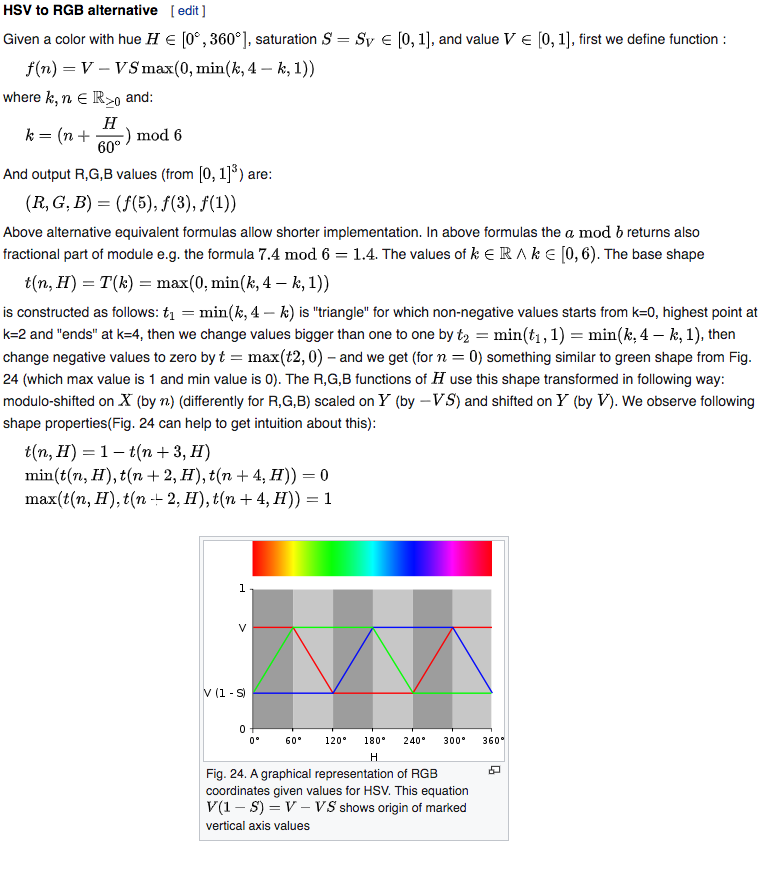I need to accurately convert HSB to RGB but I am not sure how to get around the problem of turning decimals into whole numbers without rounding. This is the current function I have out of a colorpicker library:
HSBToRGB = function (hsb) {
var rgb = { };
var h = Math.round(hsb.h);
var s = Math.round(hsb.s * 255 / 100);
var v = Math.round(hsb.b * 255 / 100);
if (s == 0) {
rgb.r = rgb.g = rgb.b = v;
} else {
var t1 = v;
var t2 = (255 - s) * v / 255;
var t3 = (t1 - t2) * (h % 60) / 60;
if (h == 360) h = 0;
if (h < 60) { rgb.r = t1; rgb.b = t2; rgb.g = t2 + t3 }
else if (h < 120) { rgb.g = t1; rgb.b = t2; rgb.r = t1 - t3 }
else if (h < 180) { rgb.g = t1; rgb.r = t2; rgb.b = t2 + t3 }
else if (h < 240) { rgb.b = t1; rgb.r = t2; rgb.g = t1 - t3 }
else if (h < 300) { rgb.b = t1; rgb.g = t2; rgb.r = t2 + t3 }
else if (h < 360) { rgb.r = t1; rgb.g = t2; rgb.b = t1 - t3 }
else { rgb.r = 0; rgb.g = 0; rgb.b = 0 }
}
return { r: Math.round(rgb.r), g: Math.round(rgb.g), b: Math.round(rgb.b) };
As you can see the inaccuracy in this function comes from the Math.round

